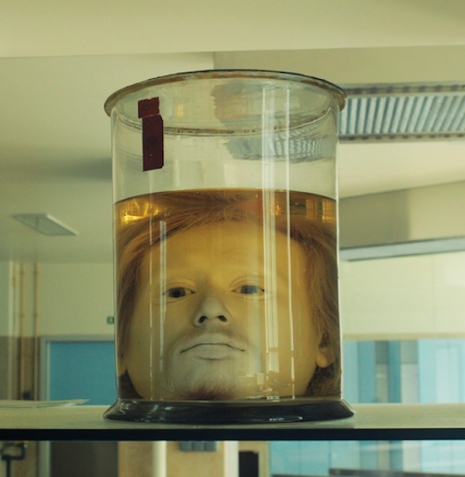Serial Killer’s Head has been preserved in a jar since 1841

This is the head of Diogo Alves. Don’t be fooled by his seemingly placid, almost benign, yet surprised look. Diogo was a robber and a brutal serial killer who murdered some seventy people between 1836 and 1839, at the Aqueduto das Águas Livres (Aqueduct of Free Waters) over the Alcântara valley in Portugal. Diogo robbed his victims then tossed their bodies over the side of the 213-foot high aqueduct. At first, the local police thought this rather staggering number of inexplicable deaths were copycat suicides. When access to the aqueduct was closed to prevent any more “suicides,” Diogo formed a gang and turned his attention to the homes of the valley’s population. After a raid on the house of a local doctor, where Diogo murdered four of the people inside, he was arrested and sentenced to death by hanging in February 1841.
His execution coincided with the rise of the bogus science of phrenology. It was suggested by physicians that Diogo’s head be preserved in formaldehyde for examination in order to determine whether there were any signs or abnormalities in the shape of his skull that could explain why he committed such terrible crimes. This may seem utterly fantastic today, but it’s worth noting that the scientific desire to find some physical cause for behavior is not new. As recently as just after the Second World War, American scientists obtained sections of the brain removed from the skull of executed Italian fascist dictator Benito Mussolini. This gray matter was examined in a bid to ascertain whether there was any physical cause to Il Duce’s anti-Semitic and racist beliefs.
Diogo’s well-preserved head still remains in a glass jar at the University of Lisbon’s Faculty of Medicine.